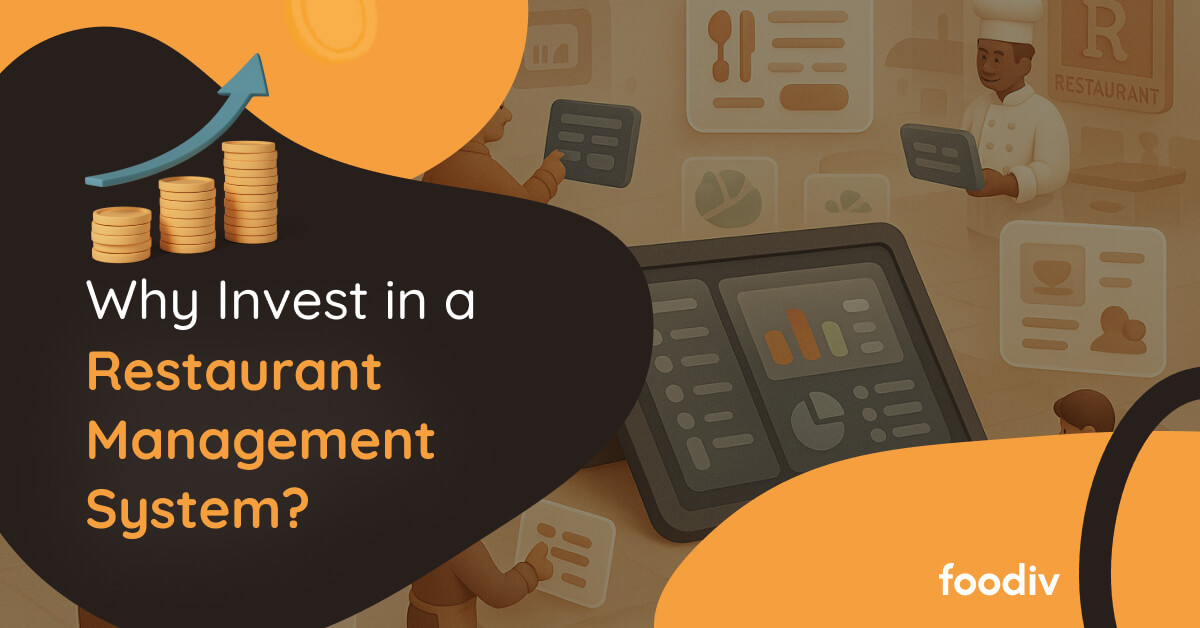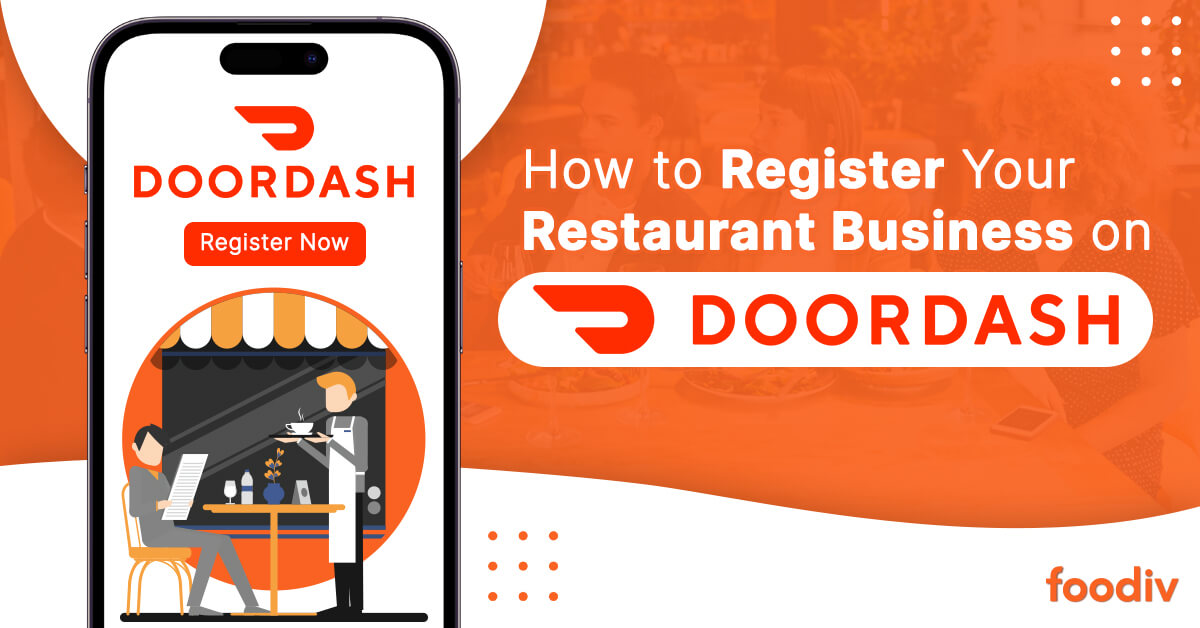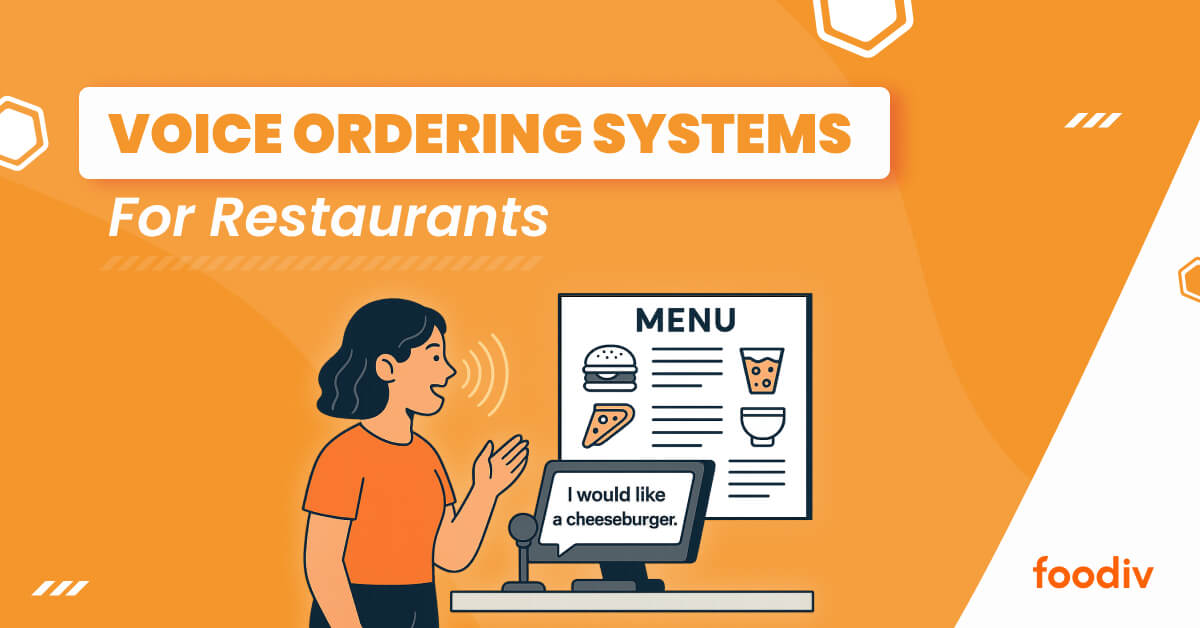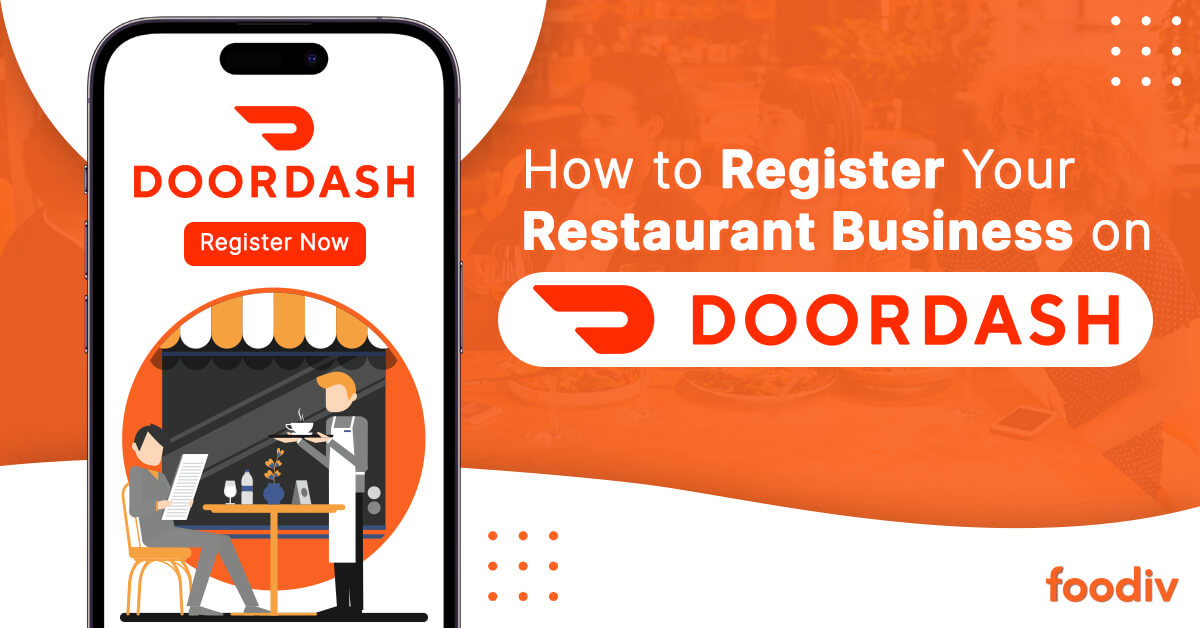
Quick Summary:
Thinking of opening a restaurant and wondering how much money you can actually make as an owner? Whether you’re starting fresh or bringing years of industry experience, one of the biggest questions on your mind is likely: “How much money do restaurant owners really earn?”
The truth is, there’s no one-size-fits-all answer—your income can vary widely depending on your restaurant type, location, costs, and business strategy. In this guide, we’ll break down real salary data, explain the factors that affect profitability, and share tips to help you maximize your restaurant’s earnings.
If you’re aiming to turn your food passion into a profitable business, this article is your starting point.
How Do You Become a Restaurant Owner?
Starting a restaurant requires more than a good recipe or a passion for food. To become a successful restaurant owner, you need to take a structured approach that includes planning, market research, and long-term financial strategy.
Define Your Concept
Begin by deciding what kind of restaurant you want to open. Consider the cuisine, style of service, target market, and dining experience. Your concept sets the foundation for everything from menu design to location choice.
Research the Market
Study your local area to assess demand, understand the competitive landscape, and identify customer preferences. This research will help you determine the best pricing, branding, and positioning strategy for your restaurant.
Create a Restaurant Business Plan
A well-prepared restaurant business plan is essential for turning your idea into a viable business. When you create a restaurant business plan, it should include your concept, target customer, pricing structure, sales forecasts, cost estimates, and marketing approach. This plan also plays a key role in securing financing from lenders or investors.
Estimate Startup and Operational Costs
Before launching, calculate your total financial needs. Consider costs such as lease deposits, renovations, kitchen equipment, licensing fees, insurance, and employee wages. Understanding your financial responsibilities helps you avoid surprises after opening.
Secure Your Funding
Depending on your resources, you may need to raise capital through loans, investors, or personal savings. Your business plan will support your funding requests by showing potential for return on investment.
Choose a Location for your Restaurant
Select a location that aligns with your target audience and restaurant type. Look at visibility, accessibility, nearby competition, and neighborhood demographics. A good location can significantly influence your restaurant’s success.
Build Your Menu
Design a menu that matches your concept and appeals to your ideal customer. Work with culinary experts or use menu development tools to balance creativity with cost control and kitchen workflow efficiency.
Hire and Train Staff
Assemble a team of experienced and reliable employees. Hiring the right chefs, servers, and managers is crucial for delivering consistent service and maintaining operational standards.
Obtain Licenses and Permits
Make sure your restaurant complies with all local, state, and federal regulations. This includes food service licenses, health inspections, and any special permits, such as those required to serve alcohol.
Prepare for Restaurant Opening
Plan your launch carefully. Consider a soft opening to test your operations and gather feedback before the full launch. Use this time to refine service, adjust the menu, and build early buzz in the community.
How Much Do Restaurant Owners Make? A Rough Average Estimate
The income a restaurant owner earns can vary greatly, depending on the success and structure of the business. In the beginning, especially during the first year of operation, it is common for restaurant owners to earn very little or nothing at all. Most of the initial profits are reinvested into the business to cover expenses such as rent, payroll, and inventory.
Once the restaurant becomes established and begins to generate consistent sales, the owner can start paying themselves a salary. Since restaurant owners manage their own businesses, they have the flexibility to decide their compensation based on the profitability of the restaurant.
For small, independently owned restaurants, owner salaries often fall within the range of $30,000 to $70,000 per year. If the restaurant grows, attracts a loyal customer base, and controls its expenses well, annual income can reach $100,000 or more. In some high-performing cases, especially with multiple locations or a strong brand, owners may earn $150,000 or beyond.
Ultimately, a restaurant owner’s income is determined by total sales, operating expenses, and how efficiently the business is run. Profits are not guaranteed, but with the right strategies and consistent performance, restaurant ownership can be a rewarding and profitable career.
Average Restaurant Owner Salary – Data Proven
Understanding how much restaurant owners typically earn can help set realistic financial expectations. While earnings vary significantly, there is data available to give a general picture of what you might expect in different situations.
National Average Salary
According to data from Indeed, the average base salary for a restaurant owner in the United States is approximately $65,760 per year. This figure reflects earnings from a wide range of restaurant types and sizes, offering a general midpoint in the industry.
Salary Range
The annual income of a restaurant owner can range from as low as $20,000 to more than $140,000. Owners of small, single-location restaurants may earn on the lower end, particularly in the first few years. In contrast, owners of established or high-volume restaurants may earn significantly more, especially when the business becomes profitable.
What Affects the Salary
Several key factors influence how much a restaurant owner earns:
- Sales revenue: Higher monthly and annual sales can support a larger salary for the owner.
- Operating costs: Lower fixed and variable costs leave more room for personal earnings.
- Business model: Quick-service and delivery-only models often have lower overhead, allowing for higher margins.
- Location: Restaurants in high-traffic or high-income areas tend to generate more consistent revenue.
- Experience and management: Skilled owners who actively manage their businesses tend to see better financial outcomes.
Early Years vs. Established Operations
In the early stages of running a restaurant, owners often pay themselves minimal salaries or reinvest profits to support growth. It’s common to prioritize stability over personal income during the first year. As the business matures and becomes financially stable, owners can begin to take higher salaries or distributions.
How to Calculate a Restaurant Owner’s Earnings Even Before You Own a Restaurant?
Estimating your potential salary as a restaurant owner before launching your business is a practical step in financial planning. While actual earnings will depend on many variables, there are ways to make informed projections based on your business model and market research.
Understand Profit Margins
To begin, research average profit margins in the restaurant industry. Full-service restaurants typically operate on margins between 3 and 6 percent, while fast-casual or quick-service restaurants may reach margins of 6 to 10 percent or higher. Once you estimate expected sales and apply the profit margin, you can calculate potential profits.
For example, if your projected annual sales are $500,000 and your net profit margin is 8 percent, your expected profit would be $40,000. This profit is the amount you could draw from, either as salary or to reinvest in the business.
Consider Business Ownership Structure
Your ownership structure affects how your salary is handled. In a sole proprietorship or partnership, profits are typically passed through to the owner as personal income. In a corporation or LLC, you may pay yourself a salary through payroll, in addition to receiving distributions or dividends based on profit.
Understanding how your business is legally structured helps you determine the best way to calculate and report your income as an owner.
Forecast Sales and Costs
Develop a detailed sales forecast based on market size, competition, pricing strategy, and expected customer volume. Estimate monthly operating expenses, including food costs, labor, rent, utilities, and marketing. Subtract your total projected expenses from your projected revenue to determine expected net profit.
This forecast will give you a realistic sense of how much money will be available after covering essential costs, and how much you could reasonably pay yourself.
Build in Flexibility
When calculating your salary before opening, be conservative. Unexpected costs and slower-than-expected sales are common in the early months. Plan for a lower salary or delay personal income during this time. Many owners start by paying themselves a minimal salary and gradually increase it as the business stabilizes.
How Much Does It Cost To Run A Restaurant?
Operating a restaurant involves several ongoing costs that vary depending on your concept, location, and scale. Whether you’re opening a small café or a full-service dining establishment, it’s important to understand each cost category and prepare accordingly.
Size and Type of Restaurant
The cost to run a restaurant is largely influenced by the type and size of the operation. Smaller formats, like food trucks or takeout counters, typically require lower investment. In contrast, full-service or fine dining restaurants demand significantly more capital.
- Small café or food truck: $50,000 to $150,000 startup
- Full-service restaurant: $250,000 to $500,000 or more
Location and Real Estate
The monthly rent will depend on your chosen area, with urban and high-traffic locations commanding higher prices.
- Suburban or small-town location: $2,000 to $5,000 per month
- Urban or commercial areas: $8,000 to $25,000 per month
Startup costs may also include renovation and leasehold improvements, which can range from $10,000 to $100,000.
Equipment and Furnishings
Setting up your kitchen and dining space requires significant upfront investment. Kitchen equipment is one of the most critical areas of spending. Creating a complete list of kitchen equipment helps you plan more accurately and avoid unexpected costs.
- Kitchen equipment: $30,000 to $100,000
- Dining furniture and decor: $10,000 to $40,000
- POS system, printers, and tablets: $3,000 to $10,000
A typical list of kitchen equipment may include ranges, ovens, refrigerators, fryers, grills, dishwashers, food prep tables, mixers, shelving, and storage solutions.
Labor and Staff Wages
Labor is a major recurring expense and varies by restaurant’s team size, concept, and location.
- Small team: $12,000 to $25,000 per month
- Larger teams (15+ staff): $30,000 to $60,000 per month
This includes wages, payroll taxes, insurance, and training.
Food and Beverage Costs
Food cost is a key metric in restaurant profitability. Most restaurants aim to keep food and beverage costs within 25% to 35% of total sales.
- For $50,000 monthly sales, food costs range from $12,500 to $17,500
- Cost control depends on portioning, inventory management, and vendor agreements
Utilities and Maintenance
Monthly utility and equipment maintenance expenses should be factored into your operating budget.
- Utilities (gas, electric, water, internet): $2,000 to $4,000 per month
- Maintenance and repairs: $500 to $1,500 per month
Regular maintenance of kitchen equipment is essential for safety and efficiency.
Licenses, Permits, and Insurance
Legal compliance and insurance coverage are required and vary by location and business model.
- Basic business and food licenses: $500 to $1,500
- Liquor license (if needed): $3,000 to $10,000 or more
- Monthly insurance premiums: $200 to $1,000
Marketing and Promotions
Ongoing marketing helps attract new customers and keep your brand visible.
- Monthly budget: $500 to $2,000
- Initial branding and website design: $2,000 to $8,000
Digital marketing, local partnerships, and grand opening promotions are common first-year expenses.
Estimated Total Costing of the Restaurant
- Small-scale concept: $50,000 to $150,000
- Mid-size casual restaurant: $200,000 to $350,000
- Full-service or upscale dining: $400,000 to $750,000 or more
- Monthly operating costs typically range from $20,000 to $100,000, depending on staffing, rent, and scale.
When Do Restaurant Owners Start Making Money?
Restaurant owners typically do not earn a consistent income right after opening. In many cases, it can take several months or even years before the business generates enough profit to pay the owner a regular salary. The timeline depends on startup costs, revenue growth, market demand, and how well the restaurant is managed.
Early Stage: Breaking Even
In the early stages, most of the income generated by the restaurant is used to cover fixed and variable expenses such as rent, wages, supplies, and equipment maintenance. During this phase, owners often reinvest any remaining profit into improving operations or paying off initial investments.
Some owners may choose to pay themselves a modest salary early on, especially if their business plan includes startup capital or investor support. However, this is usually limited and carefully calculated.
Year One to Two: Financial Stability
After the first year of operation, the restaurant may begin to stabilize. If the restaurant builds a loyal customer base and manages its expenses efficiently, it can start to turn a profit. At this stage, the owner may begin drawing a consistent salary, even if modest.
Consistent cash flow, repeat customers, and controlled food and labor costs are key indicators that the business is moving toward profitability.
Long-Term Profitability
For well-managed restaurants, profitability tends to improve significantly after two to three years of operation. Owners of successful restaurants may see enough profit to pay themselves a full salary and take additional income from business earnings.
Restaurants that grow or expand into multiple locations may achieve profitability faster, depending on their systems, staff, and funding.
What Do Restaurant Owners Do?
Simply put, they do everything. Restaurant owners can have different responsibilities depending on the level of their involvement with their businesses. From managing the official paperwork, delegating the daily operations, and hiring the right staff to create a concept, menu, food cost controls and marketing strategies for restaurants. Typically, a restaurant owner does the following things;
- Creating the right concepts for restaurants, such as name, theme, and menu
- Hiring the right staff, such as head chefs and general manager
- Handling finances
- Managing and coordinating the supply chain
- Marketing their restaurant business
What are the Types of Restaurants from an Earning Perspective?
Restaurants can vary widely in how much profit they generate. The earning potential of each restaurant type depends on factors such as startup costs, pricing, target customers, and operational efficiency. Some restaurant models are known for higher profit margins and quicker paths to profitability.
Pizza Restaurants
Pizza restaurants consistently perform well in terms of earnings. They benefit from simple menus, low-cost ingredients, and high demand. A pizza restaurant can operate efficiently with minimal staff, especially if focused on delivery and carryout services. This makes it a reliable model for owners looking to keep costs under control while maintaining steady sales.
Bar Restaurants and Pubs
Bar restaurants are among the most profitable in the industry due to the high markup on alcoholic beverages. Many of these establishments offer small food menus to complement their drink selection, which keeps kitchen operations lean. A well-located bar restaurant can generate strong evening and weekend revenue, particularly in urban or entertainment districts.
Food Truck Restaurants
A food truck restaurant offers mobility and lower startup costs, making it an attractive option for first-time restaurant owners. Without the expenses of a dining room or full waitstaff, owners can focus on producing high-quality food while testing different locations and events. Food trucks also allow for creative, focused menus that appeal to niche markets.
Diner Restaurants and Breakfast Cafés
Diner-style restaurants often serve breakfast and comfort foods at reasonable prices, using ingredients with relatively low cost. These restaurants tend to experience high table turnover and benefit from steady morning and lunch business. Diners are particularly popular in suburban neighborhoods and small towns, where they often build a loyal customer base.
Delivery-Only Restaurants and Ghost Kitchens
Delivery-only restaurants and ghost kitchens have grown rapidly due to the increasing demand for convenience. These models operate without a traditional dining area, which means lower rent and fewer staffing requirements. They are ideal for entrepreneurs who want to enter the food service space with reduced overhead. If you are looking to start small and scale over time, one option is to create a meal prep business or ghost kitchen that offers packaged meals for pickup or delivery. This approach allows for efficient production, flexible scheduling, and recurring revenue from loyal customers.
Each type of restaurant presents different opportunities and challenges. Your choice will depend on your budget, goals, and market research. Many owners start with flexible models such as food trucks or delivery-only restaurants, and expand later as their brand gains recognition and revenue grows.
Also Read: How to Write a Food Truck Business Plan
Bonus Tips: How to Increase Restaurant Profits
Bonus Tips: How to Increase Restaurant Profits
Raising profitability in a restaurant goes beyond just cutting costs. A combination of smart pricing, operational efficiency, and targeted strategies focused on increasing restaurant sales can lead to sustained financial growth. Below are several effective ways to improve your restaurant’s performance.
Refine Your Menu
Evaluate your menu to highlight high-margin items and remove those that underperform. A concise, profitable menu reduces waste, improves kitchen efficiency, and helps your team focus on quality. Regularly update offerings based on seasonal ingredients or customer preferences to stay competitive.
Monitor Food Costs and Minimize Waste
Closely track food usage and inventory. Standardizing portion sizes, training kitchen staff, and negotiating with suppliers are practical steps to control food costs. Reducing spoilage and over-ordering contributes directly to higher margins.
Focus on Increasing Restaurant Sales
Work on strategies that directly boost revenue. This includes upselling and cross-selling, launching seasonal promotions, or introducing limited-time offers. Increasing restaurant sales also involves attracting new customers while encouraging repeat visits through excellent service and consistent food quality.
Train Staff to Upsell
Empower servers to make personalized recommendations. Suggesting complementary items, daily specials, or beverage pairings can increase average ticket size. Proper staff training ensures upselling feels natural and helpful to the customer.
Improve Table Turnover
For dine-in restaurants, faster table turnover during busy hours leads to more sales without increasing marketing costs. Streamline service by refining front-of-house operations and ensuring the kitchen is well-prepared during peak periods.
Offer Loyalty and Referral Programs
Reward repeat customers with incentives like discounts, free items, or exclusive access to new menu items. Referral programs can also encourage existing customers to bring in friends and family, helping increase both loyalty and reach.
Optimize Takeout and Delivery Services
Expanding takeout and delivery options is another effective method for increasing restaurant sales. Simplify online ordering, use reliable delivery services, and ensure packaging quality to create a consistent customer experience at home.
Use Technology to Your Advantage
Leverage modern tools such as point-of-sale systems, online reservations, inventory management, and sales tracking software. These tools improve decision-making and help you quickly identify areas where you can improve efficiency or reduce costs.
Regularly Review Operating Expenses
Stay aware of fixed and variable costs. Look for opportunities to renegotiate contracts, invest in energy-efficient equipment, and reduce unnecessary spending. Even small savings can make a difference over time when combined with increasing revenue.
Sustainable profit growth comes from a balanced approach: managing expenses while actively increasing restaurant sales. By refining daily operations and continuously engaging customers, restaurant owners can improve both revenue and long-term financial stability.
Final Thoughts
Restaurant ownership offers both challenges and rewards. While income can vary widely based on concept, location, and management, many restaurant owners find long-term success through careful planning, smart decision-making, and consistent execution.
This guide has explored the many factors that influence how much a restaurant owner can make—from average salary data and cost breakdowns to profitable restaurant models and strategies for increasing revenue. Whether you are launching a food truck, planning a ghost kitchen, or preparing to open a full-service restaurant, your ability to manage operations and adapt to market demands will play a major role in your financial success.
As you move forward, take time to create a strong business plan, stay focused on profitability, and continue learning from industry trends and customer feedback. With dedication and the right approach, restaurant ownership can be not only financially rewarding but personally fulfilling as well.
If you’re serious about starting your own restaurant, begin by outlining your concept and business goals. From there, use the tips and insights shared in this article to build a sustainable and profitable path forward.
FAQs about How Much Do Restaurant Owners Make
Are restaurants profitable?
Yes, restaurants can be profitable, but success depends on several key factors. These include choosing the right location, having a clear and focused concept, managing costs, and consistently delivering a great customer experience. Profitability also improves over time as the restaurant stabilizes and builds a loyal customer base.
What is the average income of a restaurant owner?
The average income for a restaurant owner in the United States is around $65,000 per year, according to available data. However, earnings can range from as low as $20,000 to over $150,000 annually, depending on the restaurant’s size, type, location, and performance.
What types of restaurants are most profitable?
Bar restaurants, pizza restaurants, and food truck businesses are generally considered the most profitable. These models tend to have lower food costs, higher markups, and more manageable overhead. Delivery-only kitchens and meal prep businesses can also be profitable due to reduced staffing and space requirements.
How long does it take for restaurant owners to make money?
Most restaurant owners do not see consistent profits in the first few months of operation. It may take one to two years to reach the break-even point, depending on the startup costs and customer growth. Some owners pay themselves a modest salary early on, while others wait until the business becomes stable and self-sustaining.
Can I increase my earnings as a restaurant owner?
Yes. Increasing restaurant sales and managing expenses more effectively are two of the most direct ways to improve your income. Strategies include refining your menu, boosting takeout and delivery sales, training staff to upsell, and using loyalty programs to retain customers.
Can I start a restaurant with limited funds?
Yes, it is possible to start a restaurant with a limited budget by choosing a lower-cost model such as a food truck, pop-up restaurant, or delivery-only kitchen. Many new entrepreneurs begin with one of these formats to reduce risk, test their concept, and build a customer base before expanding to a full-service location.











